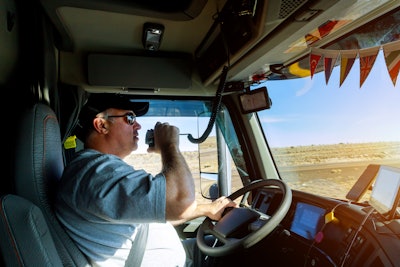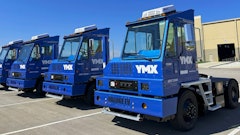
How ‘risky’ a trucking company is in the eyes of its insurance provider extends beyond claims involving collisions with other vehicles or property. While “accidents” capture most of the headlines when it comes to fleet safety, they often don’t paint the whole picture of how safe a fleet is. In fact, many driver workplace injuries happen when drivers are loading/unloading cargo or securing freight, around the truck yard, or while waiting at a customer location.
When an insurance provider evaluates how safe a fleet is, they want to know what they’re doing to address all areas of driver safety, not just what is being done to help protect them on the road.
Scope of workplace injuries in the trucking industry
Believe it or not, nearly 30% of workplace injuries in the trucking industry are from drivers slipping or falling on the job according to the U.S. Bureau of Labor Statistics. Half of these types of injuries are considered serious and can lead to drivers missing time on the road.
Considering the average age of a truck driver is above 50, mishaps can mean an extended time on the disabled list— a thoughtless jump off the bed of a trailer or from the steps of a cab can be serious. That’s why trucking companies need to fully embrace a culture that prioritizes safety beyond that from behind the steering wheel.
Reducing risk in the workplace
‘Low-risk’ fleets go far beyond taking care of the low-hanging fruit when it comes to safety. It’s relatively easy to identify and remove physical hazards at company facilities or in the yard, but establishing a safety-first culture requires much more than that. From the time a driver is hired to when they leave the company, safety practices and programs must be in place to support the culture. To support safety initiatives, you should:
- Use business communication white boards at company facilities to remind drivers of safe practices, such as reminders to conduct pre-trip inspections.
- Create an email campaign specifically on safety topics.
- Have safety meetings with drivers to discuss shortfalls in safety practices and propose solutions.
- Have an open-door policy so drivers can provide feedback on operating practices.
- Encourage drivers to report safety hazards they see at customer sites (more to come on this).
Working with customers to create safe working conditions
Even if your company has great safety programs in place to reduce workplace injuries, safety incidents can still happen at customer locations. It’s important to encourage drivers to report safety hazards when they notice them. Sometimes a customer will have policies in place to protect its employees, but not necessarily for drivers that pick up from their location. For example, a customer may require drivers to stay in their trucks while it’s being loaded. While this policy may be intended to protect a driver, the driver has no idea if the cargo is being secured properly or if the driver needs to do anything to secure the load afterward.
A good working relationship with the customers you work with can help alleviate many of the potential safety issues drivers could experience. If a driver identifies a possible safety issue with a customer, you could ask if they’d be open to a risk evaluation. Most companies would like to know if there’s an issue with their safety practices.
Factors to consider when hiring new truck drivers
The drivers you hire can make or break how safely your fleet operates. If they’re not vetted properly before hiring or trained with the skills they need to succeed once they’ve signed on, that can create compounding issues for your overall safety program.
When you go through the hiring process, go beyond looking at their driving record.
- Contact their previous employer(s) to get a sense of their work habits. If they don’t seem to be a fit with your company culture or present themselves as a “team player” during the interview, look at other candidates.
- Request to perform a personality assessment. This can match personality traits to a specific application or route.
- Request to perform a fitness assessment. This is useful in making sure a driver is physically able to perform the demands of a job, especially in flatbed or vocational applications.
Tips to reinforce safe practices
It’s easy to get complacent with safety initiatives, especially if many of the drivers in your fleet have years of experience and you expect them to perform their jobs safely. But, that can become a slippery slope. Like most people, drivers have a lot on their plate balancing work and their personal lives. And because of that, it can be easy for them to forget or rush through tasks without following proper safety protocols. It’s important to maintain communications with drivers to keep safe practices top of mind. When kids are out of school during breaks, construction projects start up in your area or severe weather conditions are in the forecast, reminding drivers of potential hazards can help them be more aware out on the road.
Continual training for both experienced and inexperienced drivers is also a great way to ensure drivers receive the information they need to perform various tasks safely. When it comes to creating a safer workplace environment for drivers, start with small tasks to reduce hazards and gradually work up to making more significant reforms to safety initiatives and programs.



















